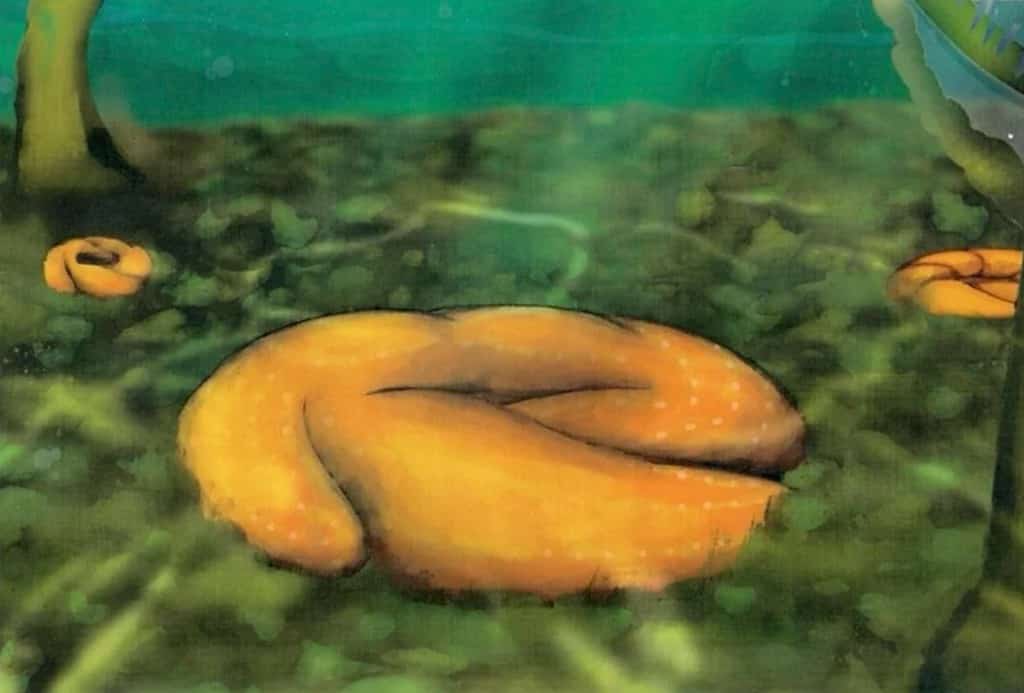We’re all looking for the right place to fit in — and this is true for some of Earth’s earliest animals. Researchers from the University of California Riverside found that Obamus coronatus, a soft-bodied animal that lived in the sea, 550 million years ago, chose to live on specific parts of the sea floor. Specifically, it was looking for the company of other Obamus.

For a long time, researchers thought that macroscopic life emerged during the so-called Cambrian explosion, some 500 million years ago. But then, researchers found evidence that even 600 million years ago, macroscopic life was thriving in some parts of the world.
This pre-Cambrian period is called Ediacara, and creatures that lived then are called Ediacaran. This period is still relatively unknown and researchers are working to uncover what life was like back then. That’s why it’s so exciting when we learn new things about an Ediacaran creature.
Back in 2018, the same group of researchers discovered a fossil of a disc-shaped animal and named it Obamus coronatus after former US President Barack Obama. The name is then completed with a Latin word that means “crowned” because of the modules found imprinted on the seafloor of what’s now a mountainous desert.
They were intrigued about the life of this now-extinct sea animal and decided to explore further, focusing on where specifically in the sea it spent its life. The sea was a largely foreign place when Obamus was around. It was dominated by a mat on the sea floor filled with bacteria and other organic materials and predators were uncommon.
“It’s not like studying dinosaurs, which are related to birds that we can observe today,” Phillip C. Boan, and lead author of the new study, said in a statement. “With these animals, because they have no modern descendants, we’re still working out basic questions about how they lived, such as how they reproduced and what they ate.”
A surprising finding
The team was surprised to find that Obamus coronatus lived much the way barnacles do today, considering the alien nature of the Earth during the Edicaran Period. The animal was about a half-inch in diameter and was shaped like a French cruller donut. It didn’t move of its own accord and likely spent most of its life in its preferred spot.
But remarkably, even with all these limitations, it was still pretty choosy.
“We think about the very oldest animals and maybe you wouldn’t expect them to be so picky. But Obamus only occurs where there is a thick mat, and it’s a pretty sophisticated way of making a living for something so very old,” Mary Droser, a professor of paleontology at UCR and study co-author, said in a media statement.
For their study, the researchers chose three animals found at a fossil site in the Australian Outback, at what’s now called Nilpena Ediacara National Park. A series of sand storms helped preserve sandstone impressions of entire animal communities that lived there. The team looked at how the animals were geographically distributed.
The Obamus is the first example of a habitat-selective Ediacaran creature. However, it’s not clear yet how they got to where they wanted to go. The researchers believe the Obamus was likely motivated by the need to reproduce. It likely spread itself through selective larvae that preferred places with thick microbial mat and near other Obamus.
The researchers’ laboratory currently receives funding from NASA’s Exobiology program because comprehending the evolution of life on Earth can provide valuable insights into the potential development of life on other planets. “This is our window into how a complex ecosystem forms. We only have one Earth,” Boan said in a statement.
The study was published in the journal Paleobiology.






